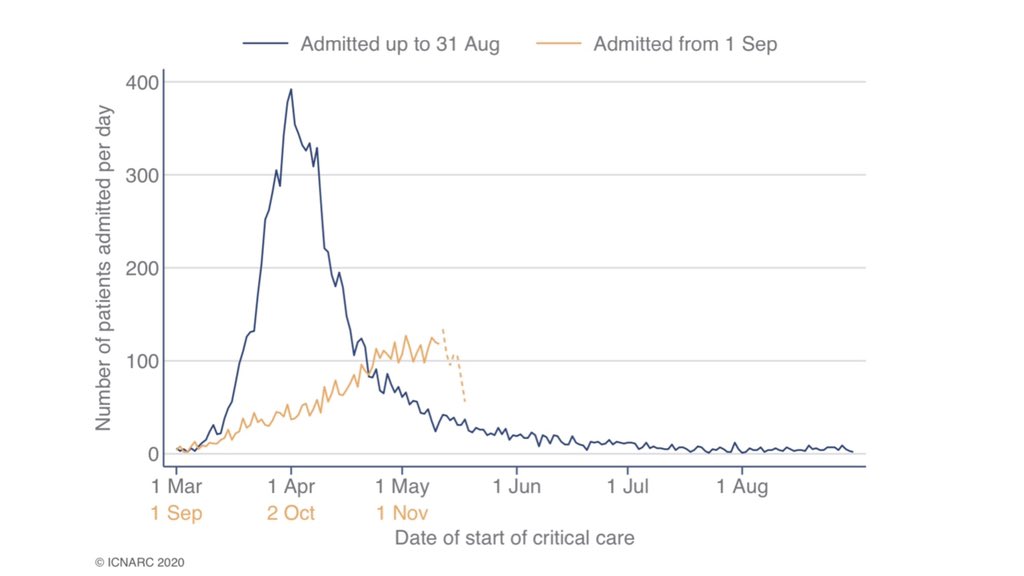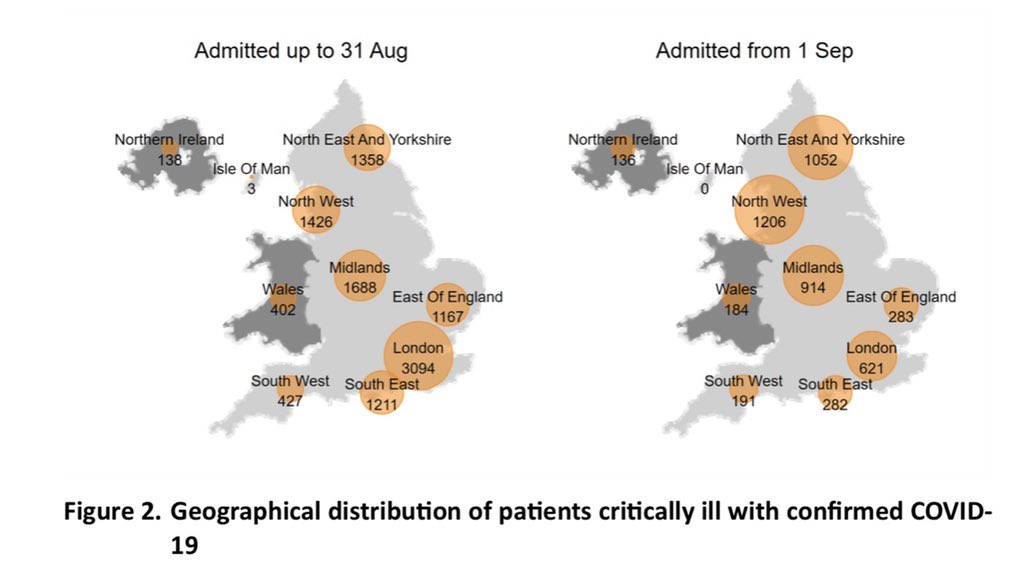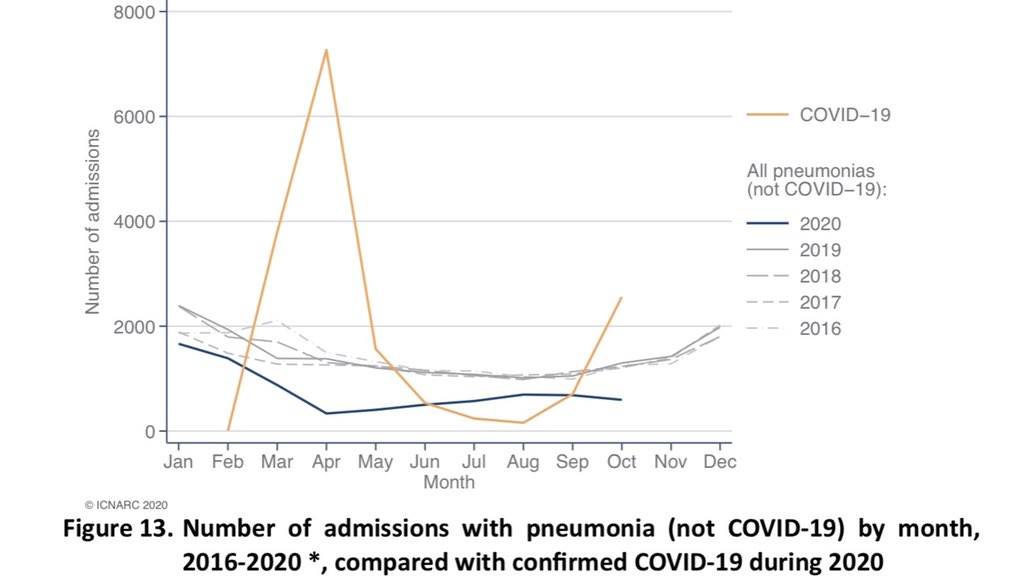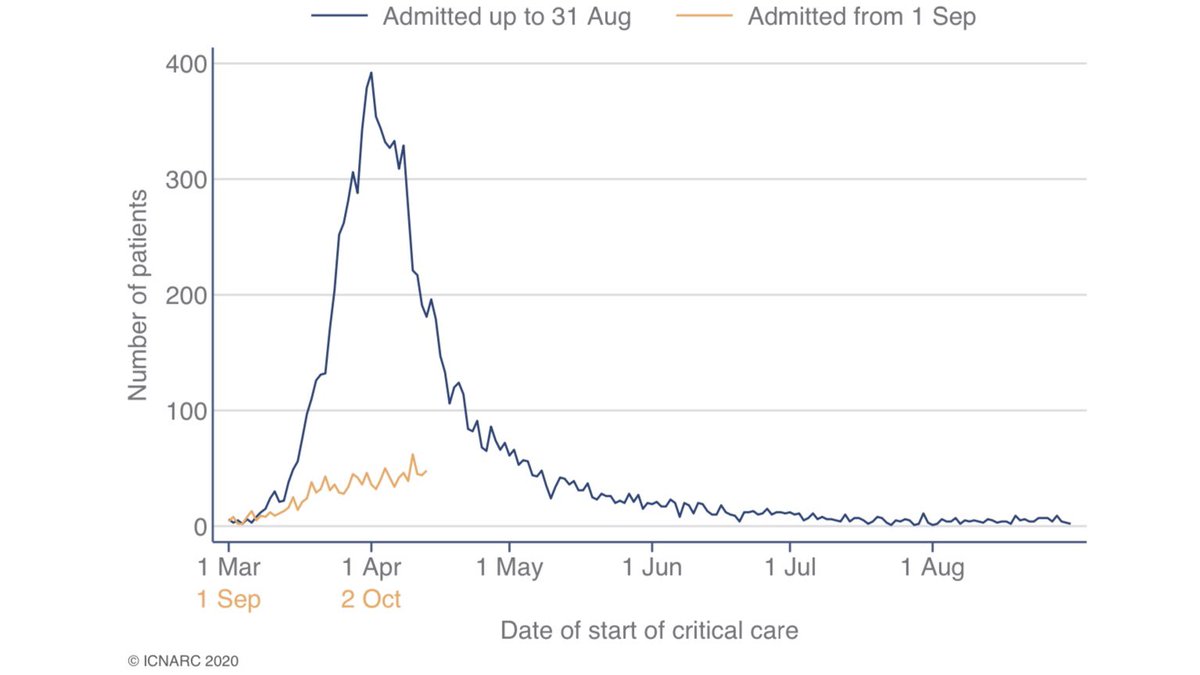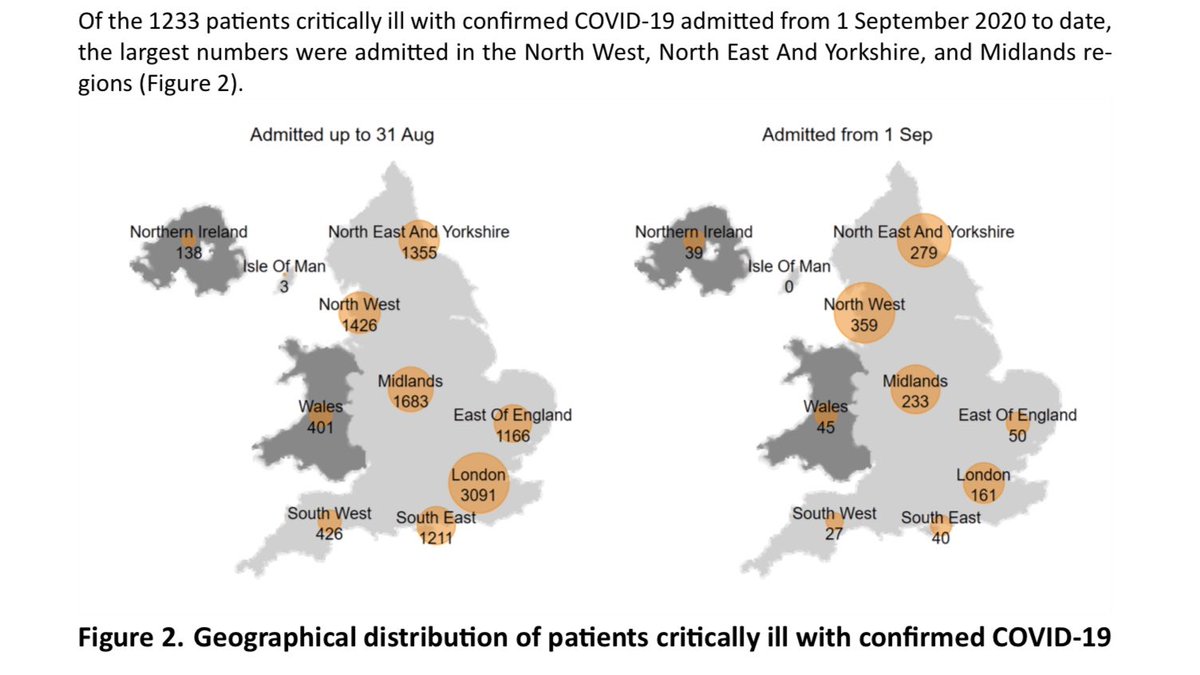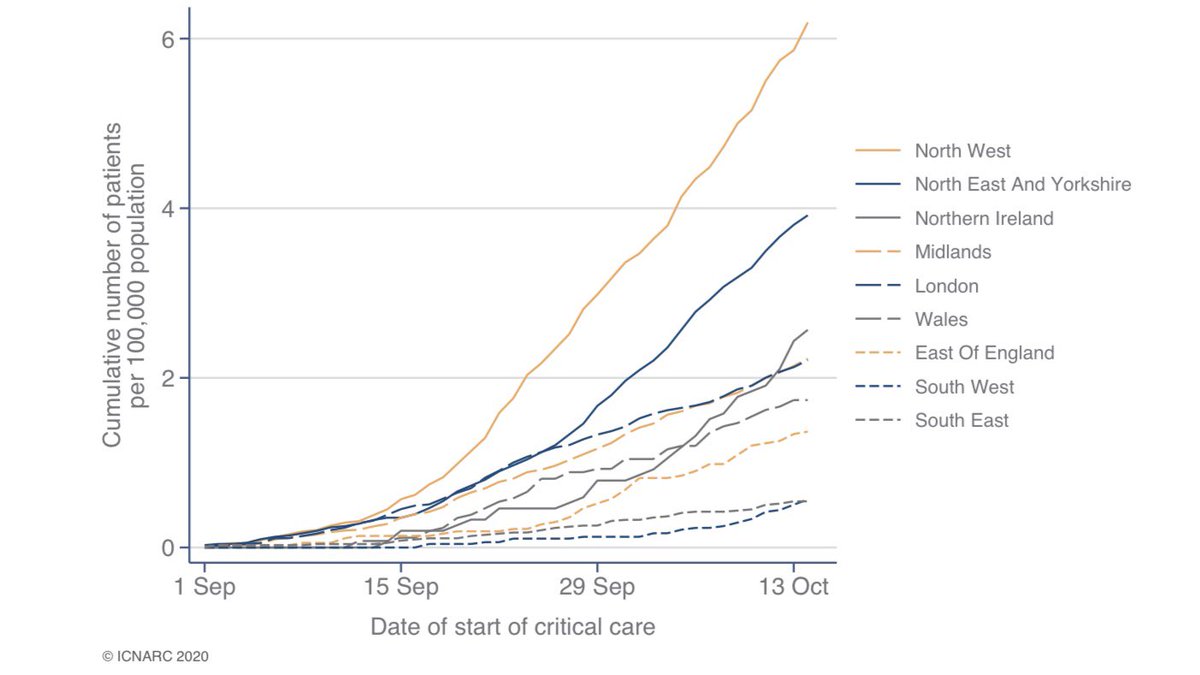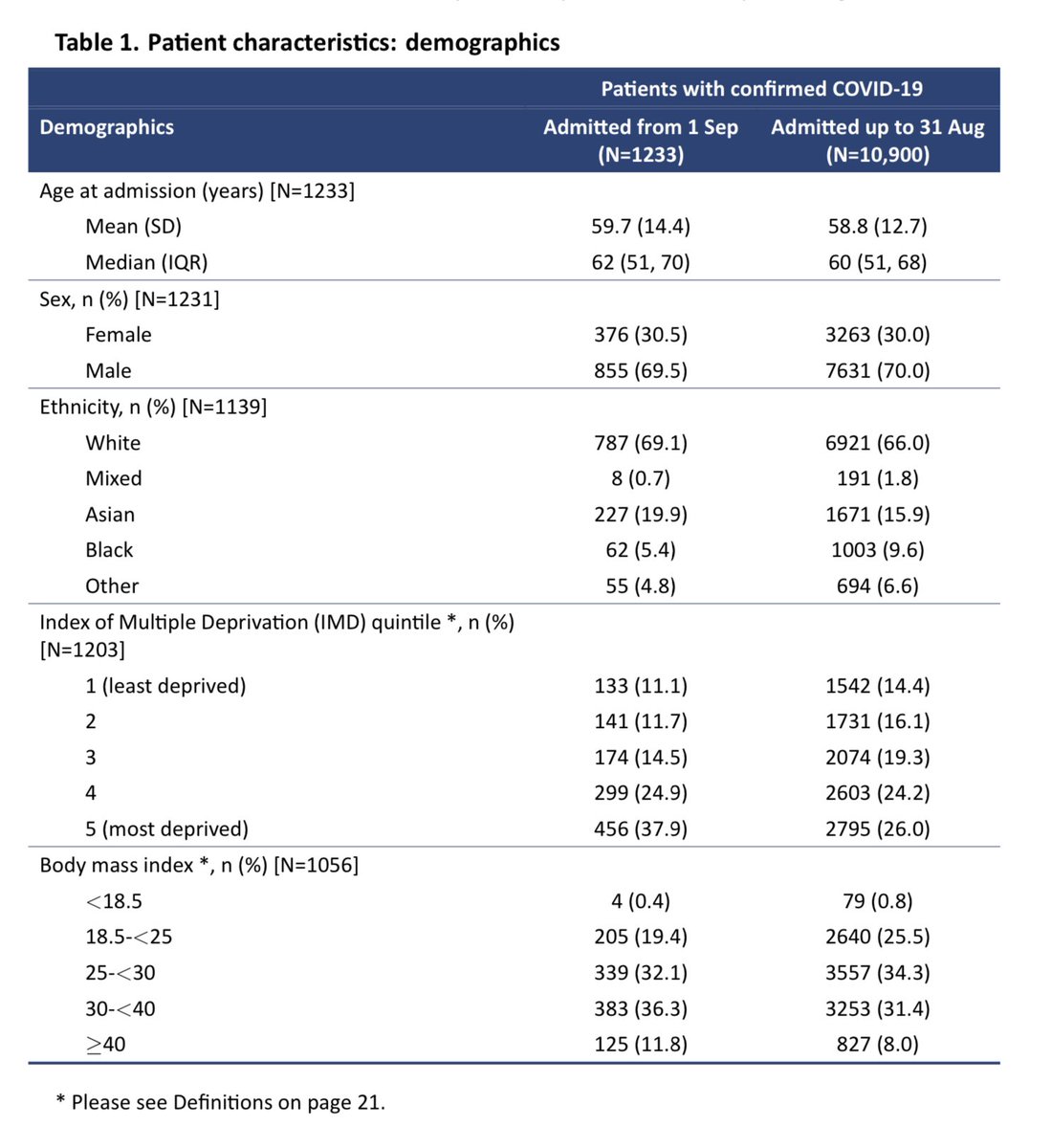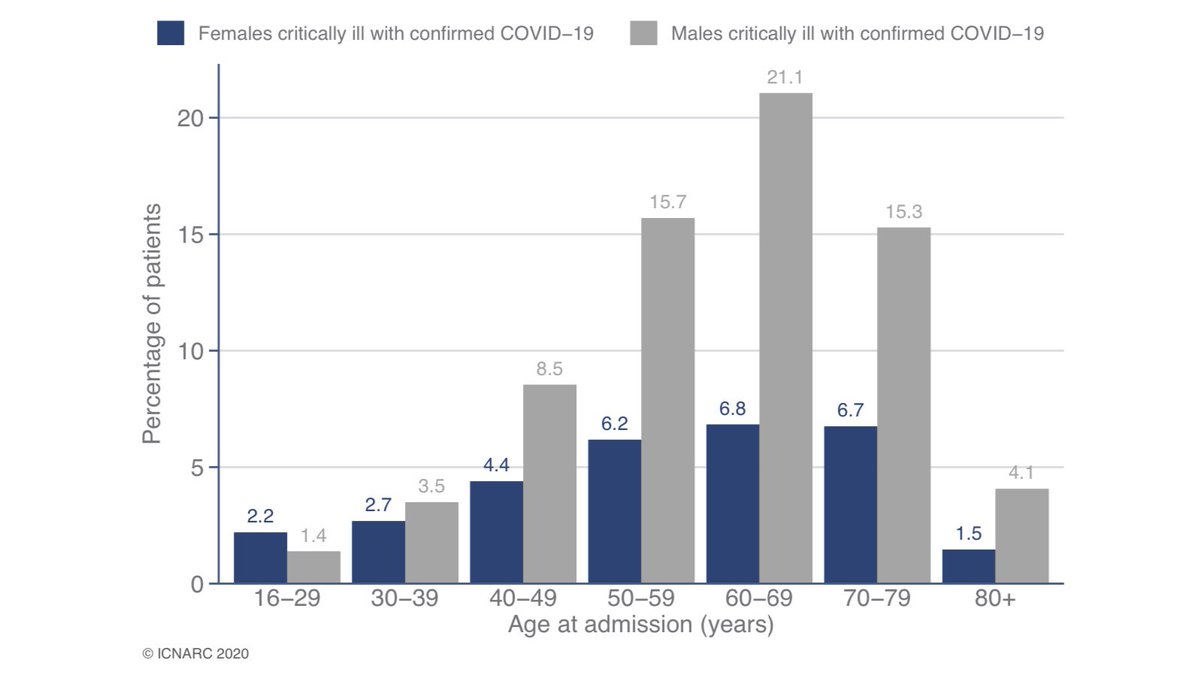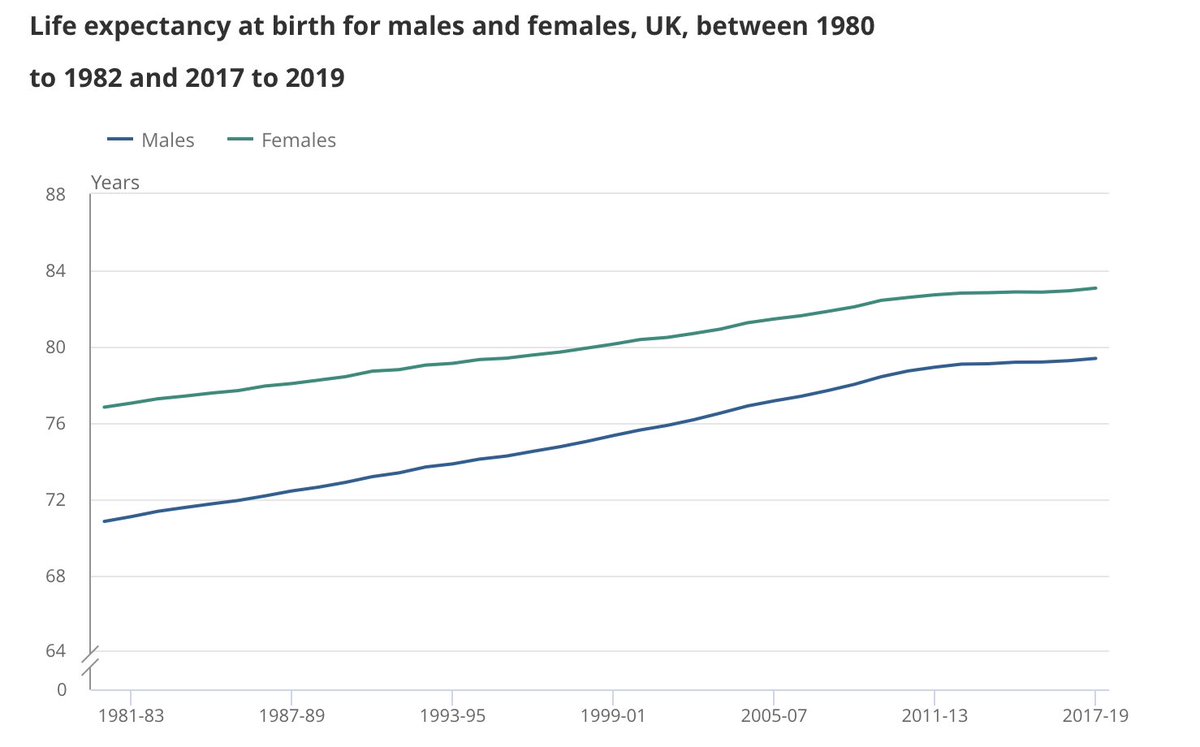
@hughosmond @COVID19actuary Yes, non-COVID deaths have been below expected levels since late May. The shortfall is increasing as we approach the usual winter peak. This suggests that a fair number of those who died in April / May would have been unlikely to survive this winter. We can estimate how many...
@hughosmond @COVID19actuary CMI reported 63,500 excess deaths to week 24 (mid June). This fell through summer and had risen again during the second wave, reaching 70,300 excess deaths to 11 December.
So excess deaths increased by 6,800 despite 23,600 additional COVID deaths. A “shortfall” of 16,800 deaths.
So excess deaths increased by 6,800 despite 23,600 additional COVID deaths. A “shortfall” of 16,800 deaths.
@hughosmond @COVID19actuary This suggests that around one quarter of those who died during the initial peak might have died by now of other causes. That is far fewer than some were suggesting at the time (there was talk of it being a majority, which actuaries were quick to challenge).
@hughosmond @COVID19actuary Following this logic, it is clear that the second wave is having a worse impact than many acknowledge. We are seeing significant excess deaths each week, despite the “drag” caused by non-COVID deaths being below normal levels.
@hughosmond @COVID19actuary Throughout the year, actuaries have been clear that excess deaths is the best measure by which to judge the impact of the pandemic. That is as true now, with excess death numbers below COVID death numbers, as it was when excess deaths were significantly higher.
@hughosmond @COVID19actuary Of course, this view could be seen as somewhat cold and detached. It gives no weight to the very real losses suffered by families who lost loved ones months before their time. It does however give us a clear and objective measure, which we have used throughout the year.
@hughosmond @COVID19actuary To date there have been over 70,000 excess deaths in the UK. That number will continue to rise in the coming weeks, as many more families lose loved ones before their time. We must hope that the vaccine roll out is a success, bringing an end to these excess deaths ASAP.
• • •
Missing some Tweet in this thread? You can try to
force a refresh

